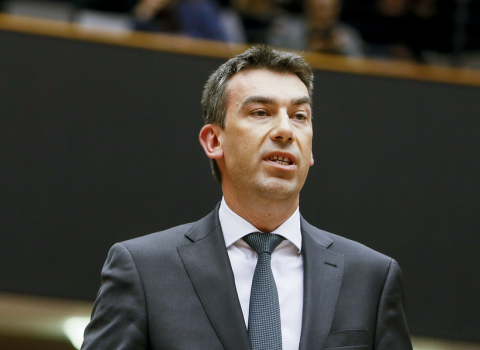Research lead
A team of researchers at CIC nanoGUNE, Donostia International Physics Center DIPC, Centro de Física de Materiales of CSIC/UPV-EHU in San Sebastian, Spain, Harvard University in the US and the Max Planck Institute of Biochemistry in Munich, Germany, have developed a new method for controlling light on the nanoscale by adopting tuning concepts from radio-frequency technology. This opens the door for targeted design of antenna-based applications including biosensors and extremely fast photodetectors, for use in biomedical diagnostics and information processing.
The researchers worked with infrared gap-antennae, which generate a very intense hot spot inside the gap, allowing for highly efficient nano-focusing of light. To study how the presence of matter inside the gap affects the antenna’s behaviour, the researchers fabricated small metal bridges inside the gap. They mapped the near-field oscillations of the different antennae with a modified version of the scattering-type near-field microscope that the Max Planck and nanoGUNE researchers have pioneered over the last decade. With this microscope it is possible to image local antenna fields down to 50 nm without disturbing the antenna.
“By monitoring the near-field oscillations of the different antennae [...] we were able to directly visualize how matter inside the gap affects the antenna response. The effect could find interesting applications for tuning of optical antennas”, says Rainer Hillenbrand, leader of the Nanooptics group at the CIC nanoGUNE Consolider institute, the cooperative research centre, which opened in San Sebastian in January this year.
The nanooptics group from DIPC and CSIC-UPV/EHU, led by Javier Aizpurua in San Sebastián, confirmed the experimental results by means of electrodynamic calculations. The calculated maps of the antenna fields are in good agreement with the experimentally observed images. The simulations give insights into the dependence of the antenna modes on the bridging, thus confirming the validity and robustness of loading the gap with matter to manipulate and control nanoscale local fields in optics.
The researchers then applied these radio–frequency antenna design concepts to visible and infrared frequencies to explain the behaviour of the loaded antennae within the framework of optical circuit theory. “By extending circuit theory to visible and infrared frequencies, the design of novel photonic devices and detectors will become more efficient. This bridges the gap between these two disciplines”, says Javier Aizpurua.
This work provides the first experimental evidence that the local antenna fields can be controlled by gap-loading. It opens the door to designing near-field patterns in the nanoscale by load manipulation, without the need to change antenna length. This could be a valuable technique in the development of compact and integrated nanophotonic devices.



 A unique international forum for public research organisations and companies to connect their external engagement with strategic interests around their R&D system.
A unique international forum for public research organisations and companies to connect their external engagement with strategic interests around their R&D system.